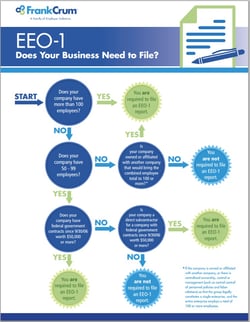
The EEO-1 Reporting deadline is quickly approaching; do you know if your business is prepared? If you’re unsure of what the EEO-1 is, it is an annual survey required by the Equal Employment Opportunity Commission (EEOC) used to track trends in the gender, racial and ethnic identity of America’s workforce.
The government analyzes the data to “protect the civil rights of workers” and to examine employment patterns and representation. Finding out whether you need to file this report or not is important to maintaining compliance standards in your business.
If you use a PEO for payroll processing and other administrative services, they may be able to file this report on your behalf. In this blog, we are going to cover some basic points behind the EEO-1 report to help you discern if you need to file or not.
The Facts Behind the EEO-1
Mark your calendars, because the deadline for the EEO-1 report is September 30th of every year. You have 2 options when you are planning to file. You can either:
- File a paper copy of the report, or
- Submit an electronic file
Who must file depends on a few important factors. Some questions you need to ask yourself are:
- Do you have 100 or more employees?
- Do you have multiple companies which are owned or affiliated with one another, or a centralized ownership, control or management (such as central control of personnel policies and labor relations) so that the group constitutes a single enterprise, and combined the entire enterprise employs a total of 100 or more employees?
- Do you have 50-99 employees and also have federal government contracts (or if you are a direct subcontractor for a company with federal contracts) since September 2006 worth $50,000 or more?
If you answered “yes” to any of these questions, you are required to file a report.
For larger corporations of 100 employees or more, it is a good idea to gather the information you will need for the EEO-1 report upon hire. This way, your department will have the data at the time of filing. Otherwise, they’d have to gather it all at the same time when they’re trying to prepare the report. For an employer with thousands of employees (or even hundreds), this can be pretty tedious.
The Takeaway
If you are still unsure about the requirements to file an EEO-1, make sure you consult an HR professional to help you. We hope this blog has been helpful at providing more information on the EEO-1 report.



.png)

